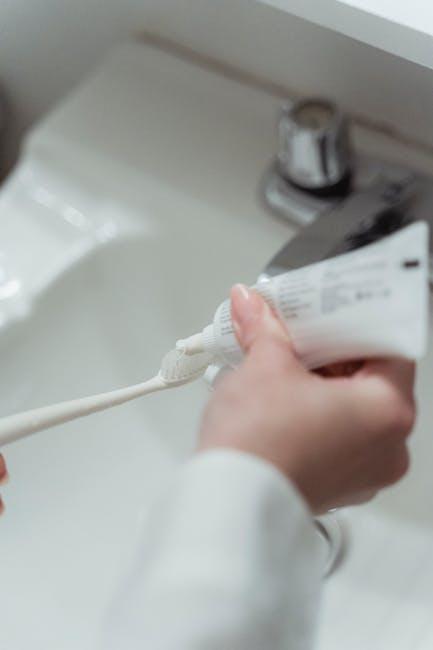Fluoride Ban Could Create Cavities For 1 Of Every 3 U.S. Kids – U.S. News & World Report
The debate over public water fluoridation has heated up in communities across the United States. Recent proposals to ban fluoride in drinking water could lead to a spike in dental cavities, threatening the oral health of millions of American children. According to a prominent study referenced by U.S. News & World Report, nearly one in every three U.S. kids could develop cavities if fluoride were removed from community water systems.
Understanding Fluoride and Its Importance in Dental Health
Fluoride is a mineral naturally found in water and many foods. It plays a crucial role in strengthening tooth enamel and preventing tooth decay, especially among children whose teeth are still developing. For over 70 years, community water fluoridation has been a safe and effective public health measure endorsed by multiple health organizations including the American Dental Association (ADA), Centers for Disease Control and Prevention (CDC), and the World Health Organization (WHO).
How Fluoride Prevents Cavities
- Strengthening enamel: Fluoride helps rebuild weakened tooth enamel, making it more resistant to acid attacks from plaque bacteria and sugars.
- Reducing harmful oral bacteria: It inhibits the growth of cavity-causing bacteria in the mouth.
- Promoting remineralization: Fluoride facilitates the repair process of early decay before cavities form.
Potential Impact of a Fluoride Ban on U.S. Children’s Oral Health
Experts warn that banning fluoride in public water could dramatically increase dental decay rates, particularly among vulnerable populations with limited access to dental care. Children are especially at risk because their teeth are developing and their oral hygiene habits are often less consistent.
What This Means for Parents and Communities
If fluoride is banned, families may face:
- Higher dental bills due to more frequent cavities and treatments
- Increased emergency dental visits and missed school days
- Greater disparities in oral health outcomes, especially in low-income communities
| Scenario | Estimated % of Children with Cavities | Comments |
|---|---|---|
| With Fluoride in Water | ~20% | Lower rates due to fluoridation benefits |
| Without Fluoride (Ban) | ~33% | Sharp increase in cavities expected |
Benefits of Fluoride Beyond Cavity Prevention
Fluoride’s benefits extend beyond just cavity prevention. It:
- Reduces tooth sensitivity
- Decreases tooth loss in later years
- Is cost-effective, saving communities money spent on dental care
Practical Tips to Protect Your Child’s Smile in a Fluoride-Free Future
Should your area ban fluoride, here are concrete steps to help reduce cavity risks for your kids:
- Maintain a consistent oral hygiene routine: Brushing twice daily with fluoride toothpaste or other remineralizing alternatives.
- Encourage healthy eating habits: Limit sugary snacks and beverages that feed cavity-causing bacteria.
- Schedule regular dental check-ups: Early detection of dental issues can prevent larger problems.
- Use fluoride mouth rinses or supplements: If approved by your dentist, these can provide targeted fluoride protection.
- Advocate for community oral health initiatives: Support programs that offer dental sealants and education.
Expert Opinions and Case Studies
Dr. Samantha Lee, Pediatric Dentist and Oral Health Advocate, commented: “Water fluoridation has been one of the greatest public health achievements. Removing fluoride risks reversing decades of progress in reducing childhood cavities, resulting in increased dental pain, infection, and costly treatments.”
Communities such as Portland, Oregon, which ceased water fluoridation in 2013, have observed a rise in children’s cavity rates, corroborating public health warnings on the fluoride ban’s impact.
Frequently Asked Questions (FAQs)
Is fluoride safe for children?
Yes. When used in appropriate amounts through water fluoridation and toothpaste, fluoride is safe and highly effective in protecting children’s teeth.
Are there natural alternatives to fluoride?
While some natural substances like xylitol and calcium phosphate help support oral health, they are generally less effective as a standalone cavity prevention measure compared to fluoride.
What happens if my community removes fluoride?
Dental health professionals advise increased vigilance with oral hygiene and professional dental care. Supplementing fluoride through dentist-prescribed treatments might become more necessary.
Conclusion: The Future of Fluoride and Children’s Dental Health
A fluoride ban could have far-reaching consequences on the dental health of one in every three children in the U.S., reversing years of progress in cavity prevention. Fluoride remains a critical, safe, and cost-effective tool to protect young smiles. Until safer or equally effective alternatives are proven viable, continuing community water fluoridation and fluoride-related interventions should remain a public health priority.
Parents, caregivers, and community leaders alike must stay informed, advocate wisely, and implement practical oral health strategies to safeguard the smiles of the nation’s children—whether fluoride is present in our water or not.


